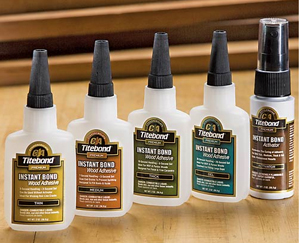
In the fine article on your site: “Cyanoacrylate: Everything You Need to Know” by Michael Dresdner, he wrote, among “Other Important Information” on cyanoacrylate, “Neither expands nor contracts while curing.” Does cyanoacrylate expand and contract, and does it breathe, after curing, after it has been applied to wood? I’m specifically thinking of a situation where it is used on a thin piece of wood as a finish on both sides and it expanded or contracted from heat and cold. Is there a good chance the wood would eventually crack? – Roger W.
We sent this question on to a woodworker who we figured would know best — finishing expert Michael Dresdner himself. – Editor
Michael Dresdner: No, cured cyanoacrylate is not likely to cause wood to crack. It does not appreciably expand or contract within the normal range of temperatures furniture is likely to experience. In fact, on very thin wood, it might help prevent cracking.
As you probably know, wood does move, but not from heat or cold. It expands and contracts indefinitely with changes in humidity. Wood moving through a wide range of moisture conditions can move enough to cause a brittle finish to crack. That’s why we use flexible finishes on exterior woodwork.
Thin cyanoacrylate applied to both sides of very thin wood is more likely to impregnate the wood, possibly all the way through, than it is to sit atop it. In doing so, it will replace much of the air space through which wood takes up and releases moisture, and will make the wood fibers more rigid, thus reducing the amount of wood movement that would otherwise occur. More stability means a lower likelihood of wood cracking.
Chris Marshall: I’m intrigued by your question, but it springboards into a question of practicality for me. Cyanoacrylate’s quick drying and instant-bonding properties wouldn’t make it a very user-friendly wood finish for anything but the smallest pieces of wood. I’m thinking of tiny craft parts here–not furniture parts. In terms of your wood movement concern, tiny wood parts would expand and contract to a negligible degree, so CA would probably work fine. But, taking two steps back, I’m not sure quite why CA glue would be a better finishing solution than other more common options like shellac, lacquer, or waterbased varnish that dry quickly, offer good durability and are made for topcoating wood. Some woodturners use CA glue as a friction finish on pens because it dries instantly and polishes well. Beyond that, I’d use CA glue as an adhesive, not a wood finish. There are plentiful, better and less skin-challenging options from which to choose.





